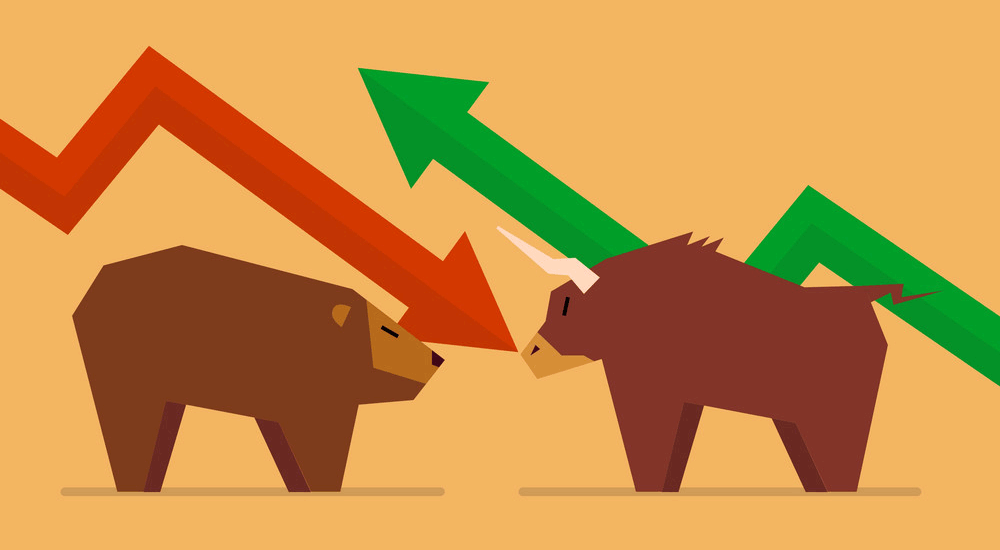Cryptocurrencies are those digital assets that boasts transparency and anonymity. Designed to work as a medium of exchange that uses strong cryptography to secure financial transactions, cryptocurrency has a world on its own.
And with its wide adoption throughout the world, there are terms that some may find confusing.
For example, there are what people call cryptocurrency “whale,” “bear,” and “bull".
The cryptocurrency world is a thing unto itself. While it has shared some terms with the traditional stock market, cryptocurrencies and their glory are very different: they operate differently, with a different medium and capacity.
And here, traders and investors in the cryptocurrency business often use those animalistic metaphor to represent something, to clearly distinguish one from another.
From whales to plankton, to even fictitious ones, here are the animals in the cryptocurrency zoo:
The Whale

The big beast of the sea, and has long thought to be he largest animal ever to have lived on Earth.
In cryptocurrency term, a whale refers to someone or an entity that holds a large amounts of digital currencies. Whales are both feared and marveled upon in equal measure, just like the marine mammals with whom they share the name.
Many Bitcoin whales are anonymous traders, exchanges, and hedge funds.
And because people can be anonymous when trading and transacting cryptocurrencies, whales tend to make use of this privilege. Due to them holding a large amount of cryptocurrencies, exposing themselves could be problematic to the market, as well as to their wellbeing.
This is why whales are mostly identifiable only by their public addresses.
What's more, many people use cryptocurrencies to evade tax among others, and anonymity plays an important role in this attempt. One example was when a whale moved $1 billion worth of Bitcoins early in September 2019, with nobody knowing who the person was. That whale only paid $700 to move 94,504 BTC.
Despite remaining relatively unknown, whales can have the influence to move the market to their preferred direction. Whales may manipulate the market to boost their profits in a number of ways. Due to their size, the impact these whales make is crushing.
This is possible because the cryptocurrency market remains largely unregulated.
Many traders pay close attention to whales, and observe how and when they trade, and by how much. Understanding this would keep them updated with the information needed to predict behavioral trends and price fluctuations
Well-known whales include Satoshi Nakamoto, Bitcoin‘s mysterious creator(s) who is thought to have at least one million Bitcoin. The Winklevoss twins for example, Tyler and Cameron were once estimated to have owned 1% of all Bitcoins in existence.
Before being adopted by the cryptocurrency world, the term "whale" has also been used to describe generous investor, a lucky gambler or a powerful holding. It has also been used in marketing, and in freemium games, to denote a well-paying customer or player.
Other Sea Creatures
While the term "whale" is widely used and the most popular, cryptocurrency communities and forums have other animal names to describe cryptocurrency owners based on how much they have.
For example, 'Plankton' (under 0.1 Bitcoin), 'Shrimps' (0.1–1 Bitcoin), 'Crabs' (1–10 Bitcoin), 'Fish' (10–50 Bitcoin), 'Octopuses' (50–100 Bitcoin), 'Dolphins' (100–500 Bitcoin). and 'Sharks' (500–1,000 Bitcoin).
And as for the whales, there are the 'Regular Whales' (1,000–5,000 Bitcoin), and 'Blue Whales' (above 5,000 Bitcoin).
The Bear and the Bull

These two terms were first coined by the traditional stock exchanges.
"Bear' refers to a market situation defined by the caution and pessimism during which traders are more likely to sell than buy. In other words, bear is used to describe the moment where the market underestimates prices.
During a bear market, traders can expect to gain lower highs and lower lows. A good example of this, was during the Bitcoin‘s downturn at the start of 2018.
A Bear market is only a sustained period of time characterized by noticeable downward movements, which shouldn't last very long. When a price correction takes place, usually, the market will correct itself, and ends the Bear market.
And as for 'Bull', it refers to the situation where the market is expressly optimistic. In other words, Bull is the exact opposite of Bear.
During the Bull market, traders witness an increasing market trend. In this sense, the market is generally characterized by optimism, investor confidence, and an increase in price.
An example of a Bull market was in December 2017, when one Bitcoin reached $20,000.
It’s important not to confuse a Bear market and a Bull market with price correction.
Other associated terms include Bear Traps and Bull Traps.
The former refer to a situation where the downward trend spiraled down to almost hitting the bottom, when suddenly the price goes up tremendously. And as for the latter, the Bull Trap, refers to a scenario where an erroneous signal that a downward trend is going to reverse, but in fact, the market drops even lower.
The Unicorn
Not distinctly used in the cryptocurrency community, the term 'Unicorn' is used to describe companies with valuation of over $1 billion.
The term was coined by venture capitalist Aileen Lee who chose the word 'Unicorn' for its rarity, and the term is meant to emphasize that metaphor. Other terms associated with unicorns, are 'Decacorns' (more than $10 billion) and Hectocorns (more than $100 billion).
While initially adopted to describe startups, since the explosion of cryptocurrencies in 2017 and 2018’s subsequent boom of ICOs (Initial Coin Offerings), early-stage startup funding has seen a massive shift.
Between 2014 and 2017, a number of ICOs have raised millions to billions of dollars in funding.
So here, the term "unicorn" has also been adopted to the cryptocurrency world, just to emphasize how the market respects them.
In conclusion, these animals (and the mythical ones) were adopted to represent how much cryptocurrencies (and influence) someone or some entities have. The terms were adopted as quickly as the market change, so people can keep up with the trends.
